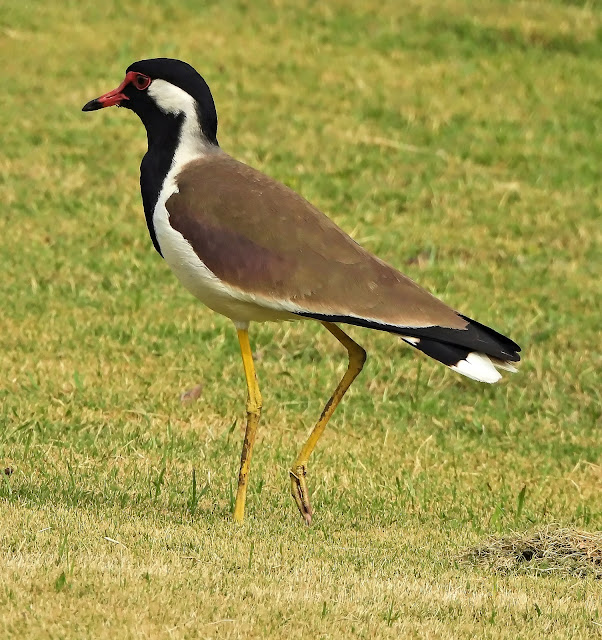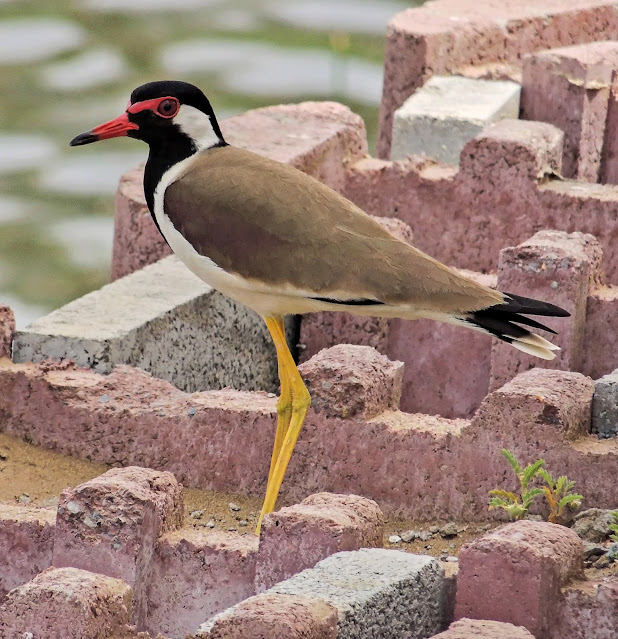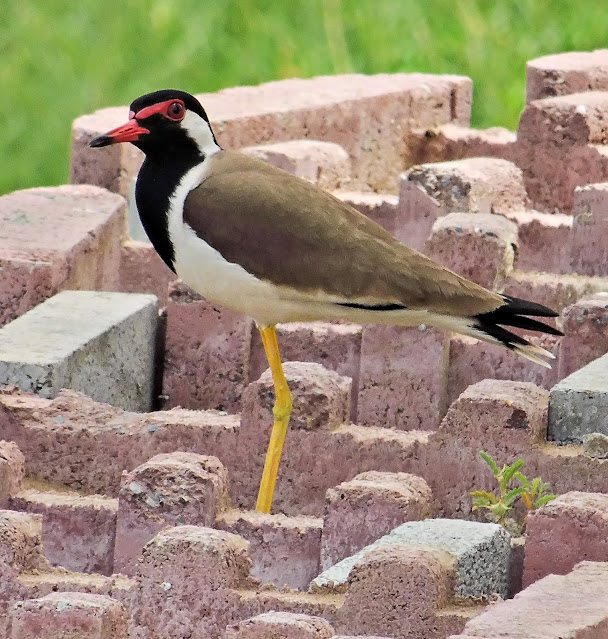The Red-wattled Lapwing, Vanellus indicus, is a striking bird with a robust build, approximately 35 cm in length. Its upperparts are a light brown with a sheen that can appear purple or green, while the head and neck boast a contrasting black. A white patch extends from the underbelly and tail, along the neck, and up to the sides of the crown. The tail is short with a black tip. Notably, it sports a red fleshy wattle before each eye, a red bill with a black tip, and long yellow legs. In flight, one can observe the distinctive white wing bars.
When identifying the Red-wattled Lapwing, look for the characteristic red wattles in front of the eyes, the black-tipped red bill, and the yellow legs. The white wing bars are particularly visible in flight. Males and females are similar in appearance, though males may have slightly longer wings.
This lapwing favors well-watered open landscapes, such as ploughed fields, grazing lands, and the peripheries of tanks and puddles. It is also known to inhabit forest clearings near rain-filled depressions.
The Red-wattled Lapwing is widely distributed across West Asia, South Asia, and Southeast Asia. It is a resident species throughout much of its range, although some populations may move altitudinally during spring and autumn.
The Red-wattled Lapwing is known for its vigilant nature, often the first to sound an alarm at intrusions. It exhibits a slow, deliberate flight but can be remarkably agile when necessary. The species is also known for its nocturnal feeding habits, particularly during the full moon.
The bird's call is a loud, scolding "did-he-do-it," which can be heard both day and night, contributing to its colloquial name, the "did-he-do-it bird."
Breeding season spans from March to August, with courtship displays involving males puffing up feathers and shuffling around females. Nests are ground scrapes, sometimes lined with pebbles or droppings, where 3-4 camouflaged eggs are laid. Both parents incubate and perform distraction displays to protect the nest.
Its diet consists mainly of insects, snails, and other invertebrates, which are typically foraged from the ground. The lapwing may also consume grains and is known to use its legs to disturb prey from soft soil.


















%2020.jpg)
%2021.jpg)
%2022.jpg)










